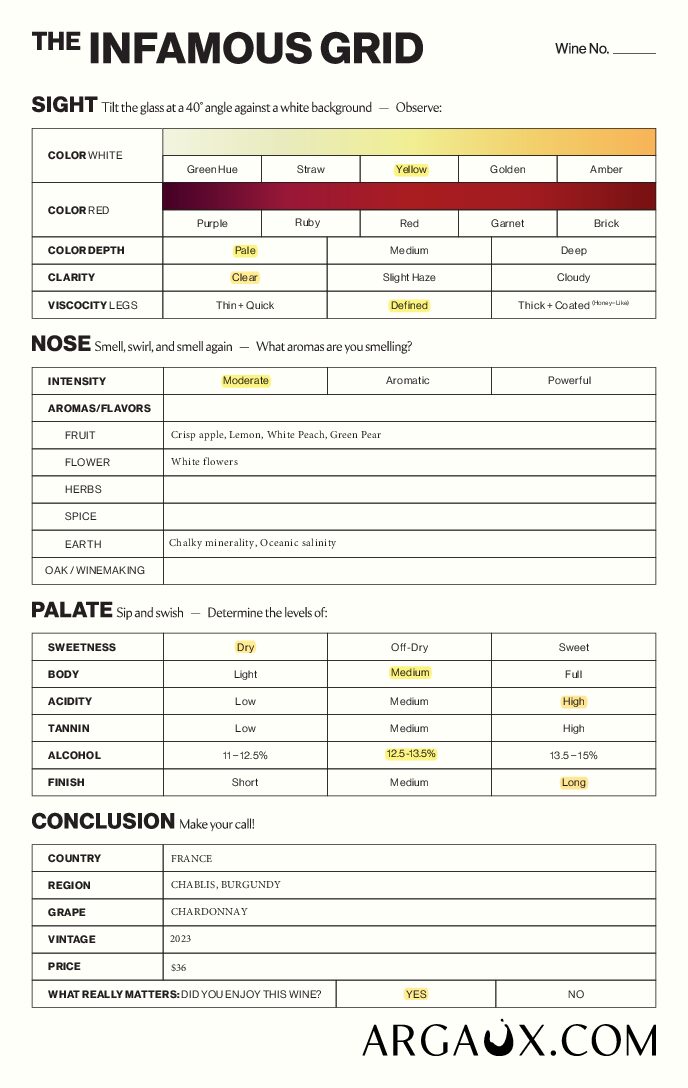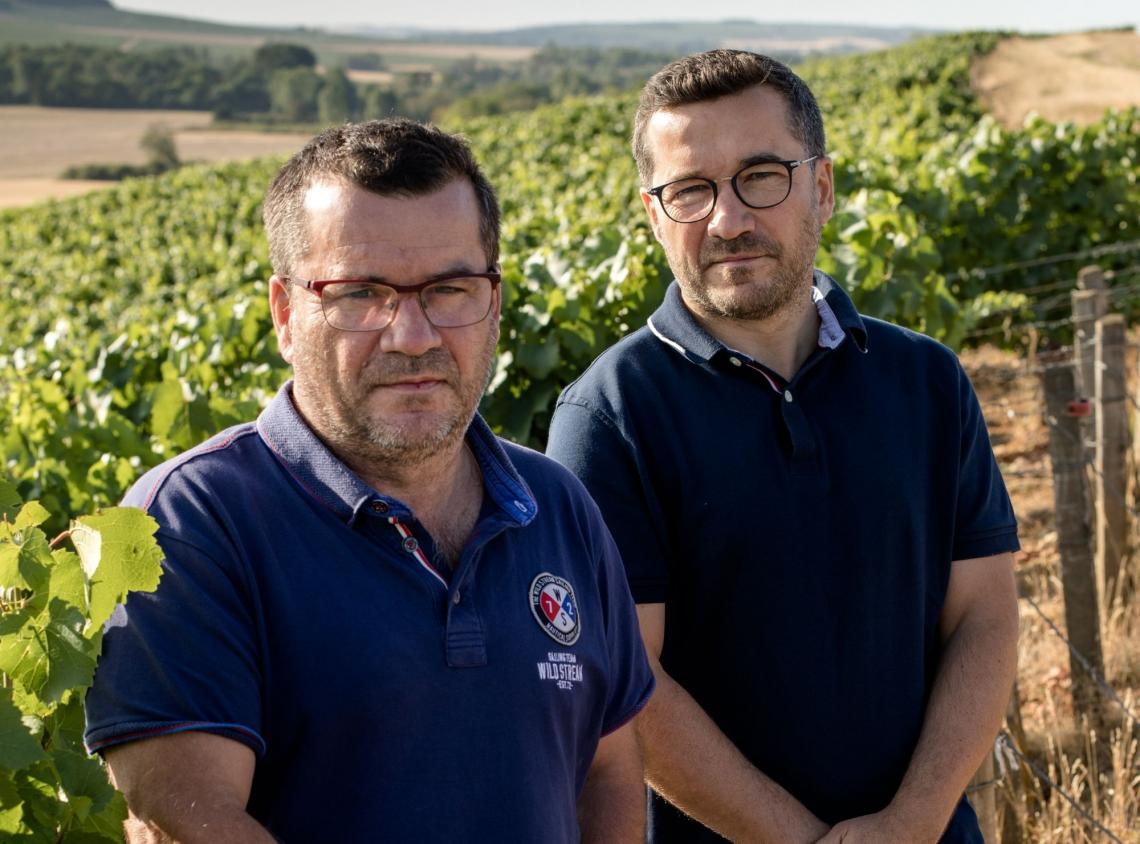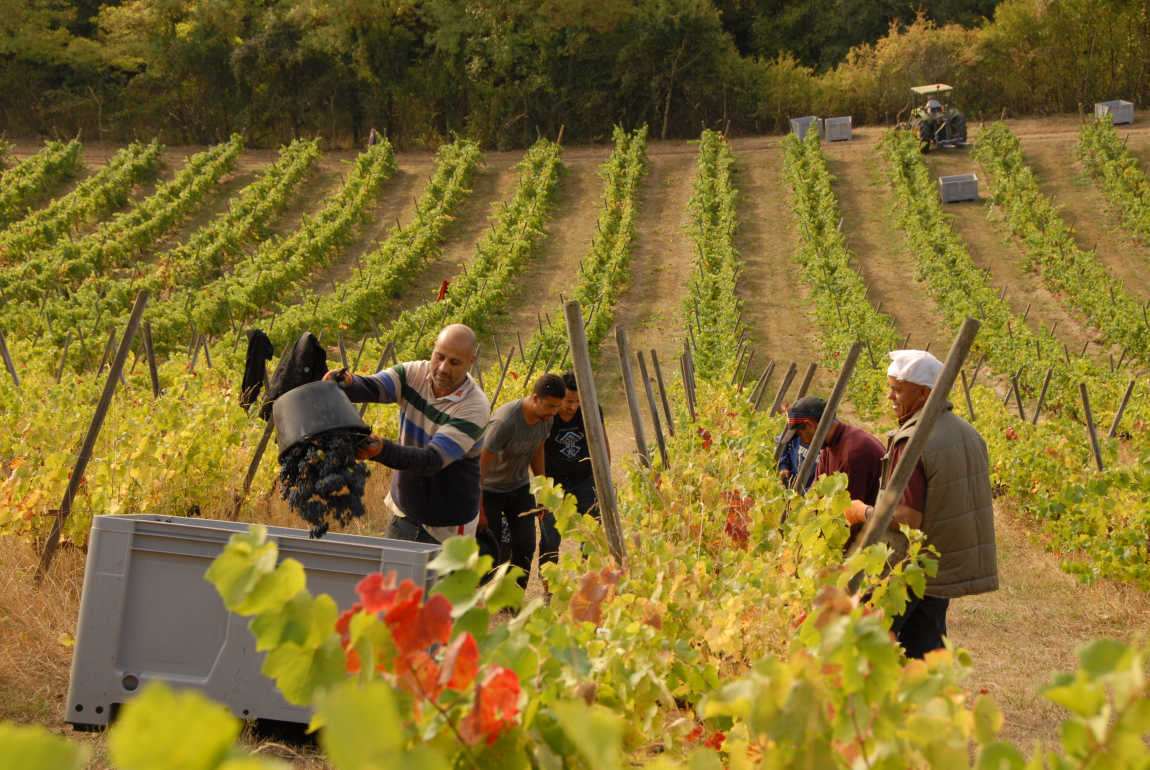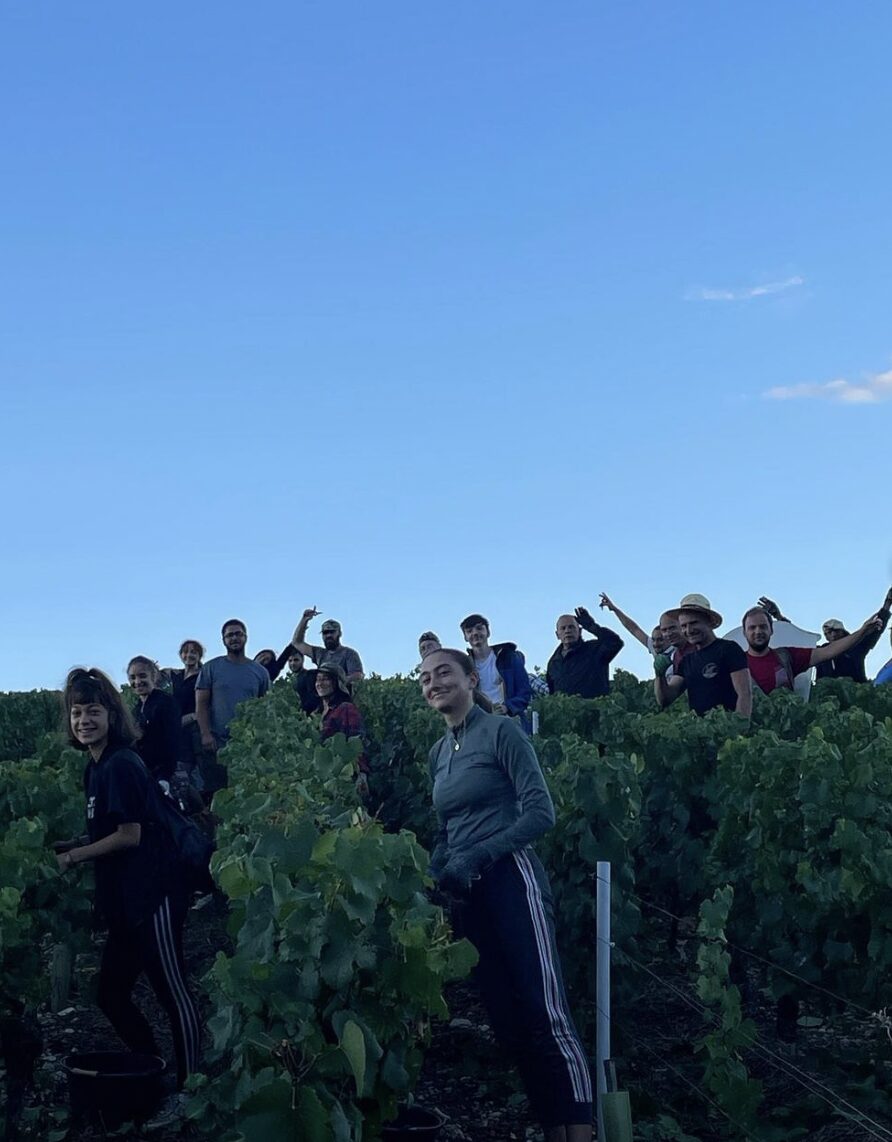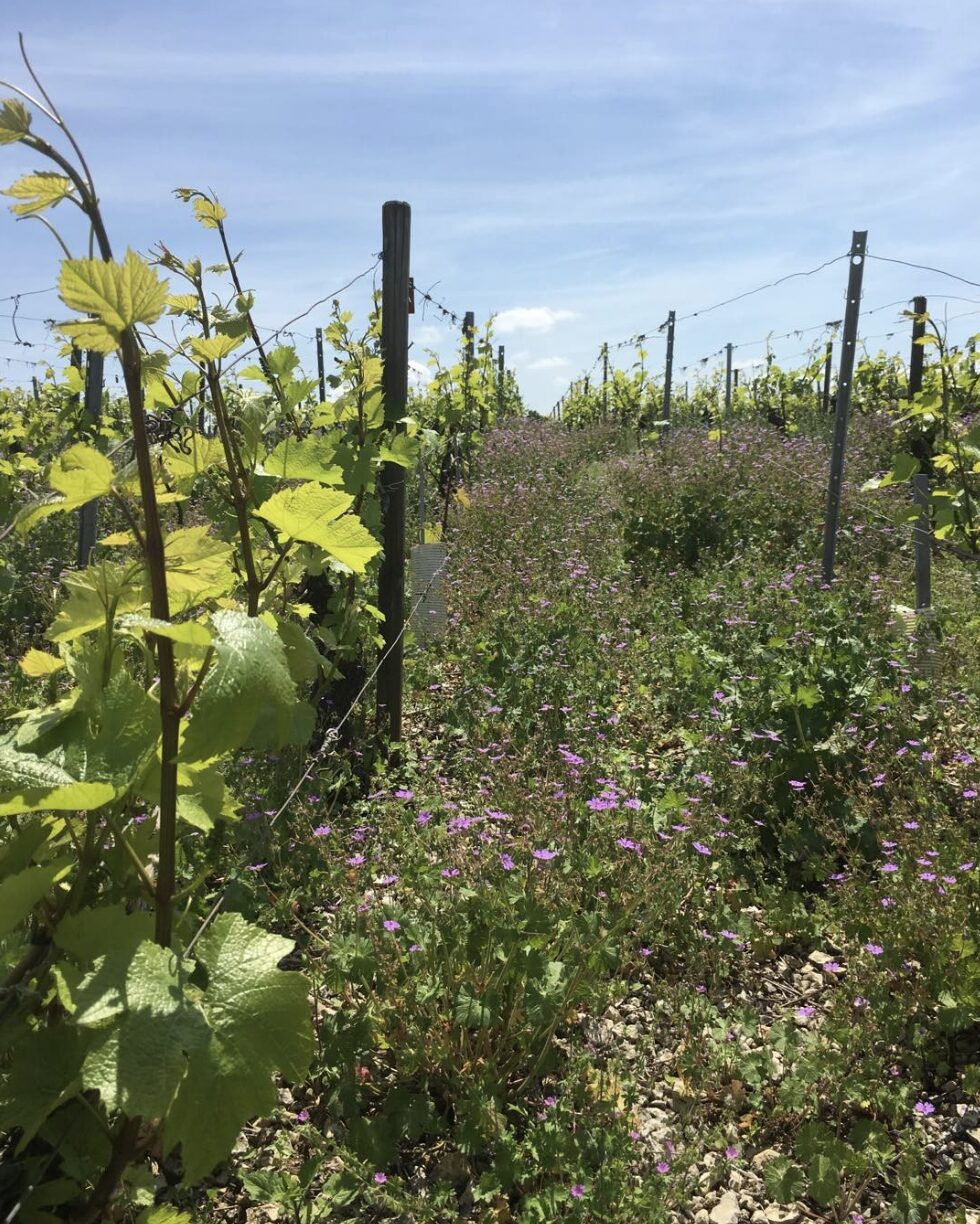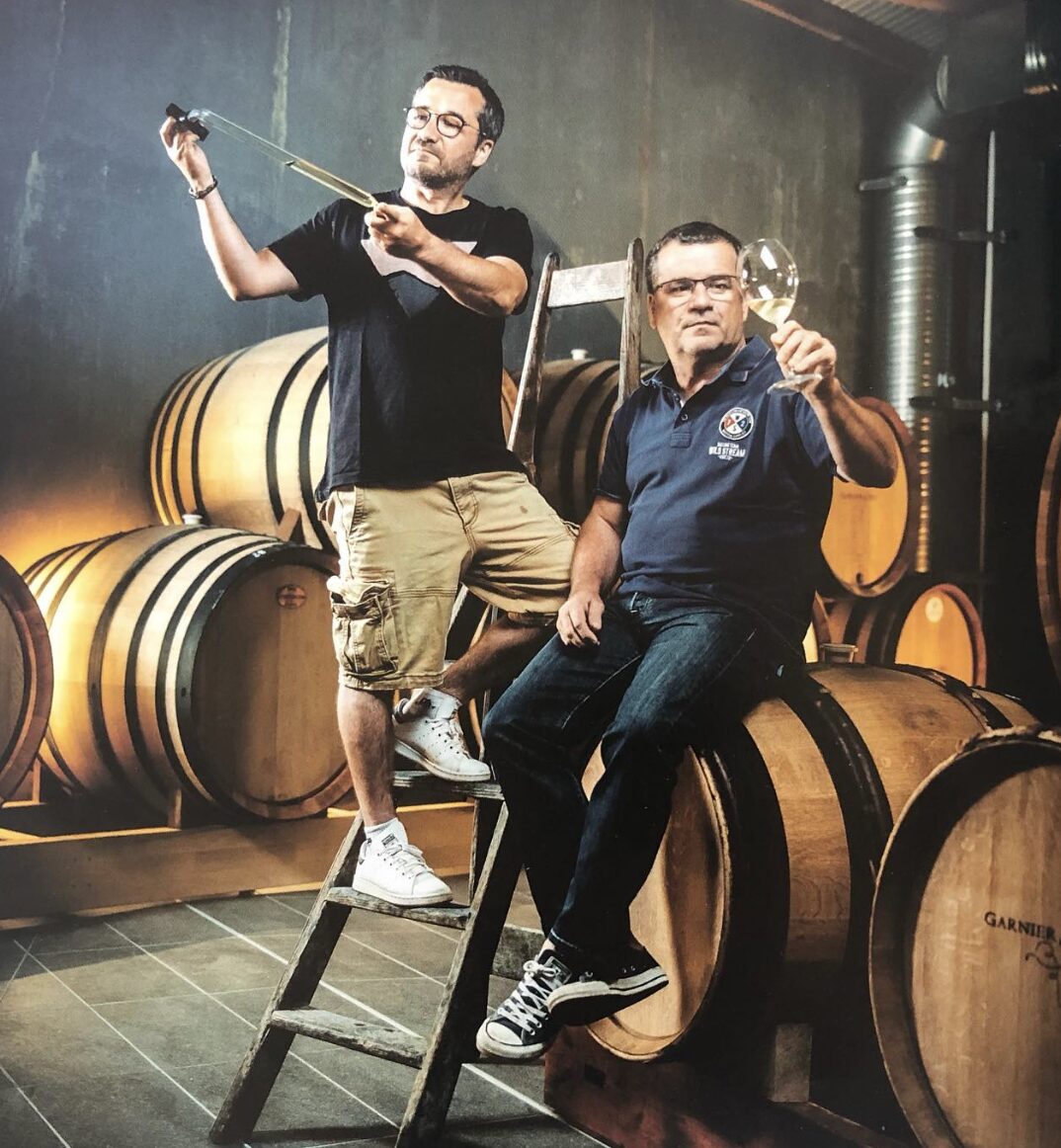2023 Domaine Garnier et Fils Chablis AOC
Chablis is a staple at Argaux. So when we decide to add a new one to the book, you better believe we have done our homework. This particular bottle was chosen after it won a blind tasting against 17 different bottles of Chablis. We invited our top Chablis clients to join us for the battle and this wine was voted #1. Enough said. It is a must-try.
Organic farming practices, native yeast fermentation, aged on the lees in stainless steel tanks for 11 months and filtered before bottling (no fining).
$36.00
In stock
Brothers Xavier and Jérôme Garnier share a passion for wine and the Chablis region, where their family has owned a 57-acre estate for many decades. While their father sold grapes to negoçiants, the brothers began making their own wine in 1996, selling it to restaurants in and around Paris. Garnier & Fils uses traditional, environmentally friendly, organic practices; they harvest later than most, ferment with natural yeast and age the wines in very large barrels. Improving every year, this exciting estate is already achieving greatness with its Chablis, which offers a delicate salinity that reflects the vineyard’s unique soil profile. Their wines include a Chablis Village, which is a lovely entry-level bottle, as well as 1er Cru and Grand Cru. Jérôme works the vineyards, and Xavier makes the wines. Together, they are leading a group of newer producers finding their voice in the northernmost part of Chablis. They recognize it takes much more work to produce high-quality wines in such a cool region. They are also proving the extra effort is well worth it, as the soft-spoken brothers go above and beyond to create beautifully balanced wines, with amazing ripeness, freshness and minerality, boasting a lush mouth feel and texture, as well as a bright, textured acidity.
Chablis is a region in northern Burgundy, France that produces white wines exclusively from the Chardonnay grape. Chablis is celebrated for its purity, elegance, and expression of terroir.
Wine Style: Chablis is known for its unoaked or lightly oaked style, allowing the purity of the Chardonnay grape and the terroir of Chablis to shine through. Stylistically they are typically dry, with high acidity and a crisp, refreshing character.
Food Pairing: Due to its high acidity and mineral character, Chablis pairs exceptionally well with seafood dishes such as oysters, shellfish, and grilled fish. It also complements light chicken or pork dishes, salads, and lemon or pesto pastas.
Terroir: During the Jurassic period, approximately 150 million years ago, the area that is now Chablis was covered by a shallow sea. The distinctive soils of Chablis, known as Kimmeridgian soils, bear evidence of this ancient marine origin. The soil is rich in limestone, clay, and fossilized oyster shells, which impart distinctive minerality to the wines.
Classification: Chablis wines are classified into different appellations based on the vineyard’s quality and location. These include:
-
- Chablis Grand Cru: The highest classification, produced from the best vineyard sites in the region.
- Chablis Premier Cru: Wines from premier cru vineyards, which are also highly regarded for their quality.
- Chablis AOC: The broader appellation covering wines from the wider Chablis region.
- Petit Chablis: Considered the entry-level appellation within the broader Chablis region hierarchy. The vineyards are located on the outskirts of the region, typically on Portlandian soils which are chalky and less stony than the Kimmeridgian soils found in Chablis proper. Petit Chablis provides an accessible and affordable introduction to the style of Chablis.



